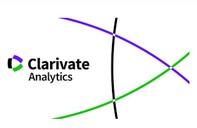Group cognitive-behavioral therapy for insomnia: a meta-analysis
Abstract
Background: insomnia is a highly prevalent disorder in the general population and in clinical practice. Although pharmacological treatment is the most widespread choice, psychological treatment appears to have longer lasting effects. The main objective of this meta-analysis was to assess the cognitive-behavioural group therapy treatment for insomnia.
Method: a systematic search for cognitive-behavioural therapy clinical trials in Pubmed, PsycINFO, PsycARTICLES, Scielo, WOK, Cochrane, Scopus and Embase. 153 articles were reviewed, of which 9 met inclusion criteria for the metaanalysis. Adding up the data from all 9 trials, a total of 699 people completed the post-test phase.
Results: after finishing cognitive-behavioural therapy, significant improvements regarding insomnia were found according to the Pittsburgh Sleep Quality Index and Insomnia Severity Index, sleep latency, wake after sleep onset and sleep efficiency. There were no significant improvements in total sleep time.
Conclusions: the results from experimental studies on cognitive-behavioural therapy as an insomnia treatment clearly suggest a positive impact on symptoms, as assessed using both validated scales and sleep diaries.Downloads
References
American Psychiatric Association (2002). DSM-IV-TR. Manual diagnóstico y estadís-tico de los trastornos mentales. Barcelona: Masson.
American Psychiatric Association (2010). DSM-5. Diagnostic and statistical manual of mental disorders. Washington, DC: American Psychiatric Publishing.
Benca, R. M. (2005). Diagnosis and treatment of chronic insomnia: a review. Psy-chiatric Services, 56, 332-343.
Bloom, H. G., Ahmed, I., Alessi, C. A., Ancoli-Israel, S., Buysse, D. J., Kryger, M. H. et al. (2009). Evidence-based recommendations for the assessment and management of sleep disorders in older persons. Journal of the American Geriatrics Society, 57, 761-789.
Bootzin, R. R. and Epstein, D. R. (2011). Understanding and treating insomnia. Annual Review of Clinical Psychology, 7, 435-458.
*Chen, H. Y., Cheng, I. C., Pan, Y. J., Chiu, Y. L., Hsu, S. P., Pai, M. F. et al. (2011). Cognitive-behavioral therapy for sleep disturbance decreases in-flammatory cytokines and oxidative stress in hemodialysis patients. Kidney International, 80, 415-422.
Cheng, S. K., and Dizon, J. (2012). Computerised cognitive behavioural therapy for insomnia: A systematic review and meta-analysis. Psychotherapy and Psycho-somatics, 81(4), 206-216
*Currie, S. R., Wilson, K. G., Pontefract, A. J., and deLaplante, L. (2000). Cogni-tive-behavioral treatment of insomnia secondary to chronic pain. Journal of Consulting and Clinical Psychology, 68, 407-416.
*Epstein, D. R. and Dirksen, S. R. (2007). Randomized trial of a cognitive-behavioral intervention for insomnia in breast cancer survivors. Oncology Nursing Forum, 34, E51-E59.
*Epstein, D. R., Sidani, S., Bootzin, R. R., and Belyea, M. J. (2012). Dismantling multicomponent behavioral treatment for insomnia in older adults: a ran-domized controlled trial. Sleep, 35, 797-805.
*Espie, C. A., MacMahon, K. M., Kelly, H. L., Broomfield, N. M., Douglas, N. J., Engleman, H. M. et al. (2007). Randomized clinical effectiveness trial of nurse-administered small-group cognitive behavior therapy for persistent insomnia in general practice. Sleep, 30, 574-584.
Harvey, A. G., and Tang, N. K. (2003). Cognitive behaviour therapy for primary insomnia: Can we rest yet? Sleep Medicine Reviews, 7(3), 237-262.
Hauri, P. J. (1997). Cognitive deficits in insomnia patients. Acta Neurological Belgica, 97, 113-117.
Irwin, M. R., Cole, J. C., and Nicassio, P. M. (2006). Comparative meta-analysis of behavioral interventions for insomnia and their efficacy in middle-aged adults and in older adults 55+ years of age. Health Psychology : Official Journal of the Division of Health Psychology, American Psychological Association, 25(1), 3-14.
Jadad, A.R., Moore, A., Carroll, D., Jenkinson, C. Reynolds, J.M., Gavaghan, D.J. et al. (1996). Assessing the Quality of Reports of Randomized Clinical Trials: Is Blinding Necessary? Controlled Clinical Trials, 17, 1-12.
*Miró, E., Lupiánez, J., Martínez, M. P., Sánchez, A. I., Díaz-Piedra, C., Guzmán, M. A. et al. (2011). Cognitive-behavioral therapy for insomnia improves attentional function in fibromyalgia syndrome: a pilot, randomized controlled trial. Journal of Health Psychology, 16, 770-782.
Morgenthaler, T., Kramer, M., Alessi, C., Friedman, L., Boehlecke, B., Brown, T. et al. (2006). Practice parameters for the psychological and behavioral treatment of insomnia: an update. An american academy of sleep medicine report. Sleep, 29, 1415-1419.
Morin, C. M., Bootzin, R. R., Buysse, D. J., Edinger, J. D., Espie, C. A., and Lichstein, K. L. (2006). Psychological and behavioral treatment of insom-nia:update of the recent evidence (1998-2004). Sleep, 29, 1398-1414.
*Morin, C. M., Colecchi, C., Stone, J., Sood, R., and Brink, D. (1999). Behavioral and pharmacological therapies for late-life insomnia: a randomized con-trolled trial. Journal of the American Medical Association, 281, 991-999.
Morin, C. M., Culbert, J. P., and Schwartz, S. M. (1994). Nonpharmacological interventions for insomnia: A meta-analysis of treatment efficacy. The American Journal of Psychiatry, 151(8), 1172-1180.
Murtagh, D. R., and Greenwood, K. M. (1995). Identifying effective psychologi-cal treatments for insomnia: A meta-analysis. Journal of Consulting and Clinical Psychology, 63(1), 79-89.
National Institutes of Health (2005). National Institutes of Health State of the Science Conference statement on Manifestations and Management of Chronic Insomnia in Adults, June 13-15, 2005. Sleep, 28, 1049-1057.
Ram, S., Seirawan, H., Kumar, S. K., and Clark, G. T. (2010). Prevalence and impact of sleep disorders and sleep habits in the United States. Sleep Breath, 14, 63-70.
Rosekind, M. R. and Gregory, K. B. (2010). Insomnia risks and costs: health, safety, and quality of life. American Journal of Managed Care, 16, 617-626.
Roth, T. (2001). New developments for treating sleep disorders. Journal of Clinical Psychiatry, 62(10), 3-4.
*Rybarczyk, B., Stepanski, E., Fogg, L., Lopez, M., Barry, P., and Davis, A. (2005). A placebo-controlled test of cognitive-behavioral therapy for co-morbid insomnia in older adults. Journal of Consulting and Clinical Psychology, 73, 1164-1174.
*Savard, J., Simard, S., Ivers, H., and Morin, C. M. (2005). Randomized study on the efficacy of cognitive-behavioral therapy for insomnia secondary to breast cancer, part I: Sleep and psychological effects. Journal of Clinical Oncol-ogy, 23, 6083-6096.
Tubtimes, S., Sukying, C., and Prueksaritanond, S. (2009). Sleep problems in out-patients of primary care unit. Journal of the Medical Association of Thailand, 92, 273-278.
Van Straten, A., and Cuijpers, P. (2009). Self-help therapy for insomnia: A meta-analysis. Sleep Medicine Reviews, 13(1), 61-71.
Walsh, J. K., Benca, R. M., Bonnet, M., and et al. (1999). Insomnia: assessment and management in primary care. American Family Physician, 59, 3029-3037.
Xunta de Galicia y Organización Panamericana de la salud (2006). EPIDAT. Programa para el análisis epidemiológico de datos tabulados.Versión 3.1. [Computer software].
The works published in this journal are subject to the following terms:
1. The Publications Service of the University of Murcia (the publisher) retains the property rights (copyright) of published works, and encourages and enables the reuse of the same under the license specified in paragraph 2.
© Servicio de Publicaciones, Universidad de Murcia, 2022
2. The works are published in the online edition of the journal under CC BY-SA 4.0 license, a Creative Commons Reconocimiento-CompartirIgual 4.0 (legal text). You are free to:
- Share: copy and redistribute the material in any medium or format for any purpose, even commercially.
- Adapt: remix, transform, and build upon the material for any purpose, even commercially.
The licensor cannot revoke these freedoms as long as you follow the license terms, under the following terms:
- Attribution: You must give appropriate credit , provide a link to the license, and indicate if changes were made . You may do so in any reasonable manner, but not in any way that suggests the licensor endorses you or your use.
- ShareAlike: If you remix, transform, or build upon the material, you must distribute your contributions under the same license as the original.
No additional restrictions: You may not apply legal terms or technological measures that legally restrict others from doing anything the license permits.
This work is licensed under a Creative Commons Attribution-ShareAlike 4.0 International License.
3. Conditions of self-archiving. Is allowed and encouraged the authors to disseminate electronically pre-print versions (version before being evaluated and sent to the journal) and / or post-print (version reviewed and accepted for publication) of their works before publication, as it encourages its earliest circulation and diffusion and thus a possible increase in its citation and scope between the academic community. RoMEO Color: Green.















